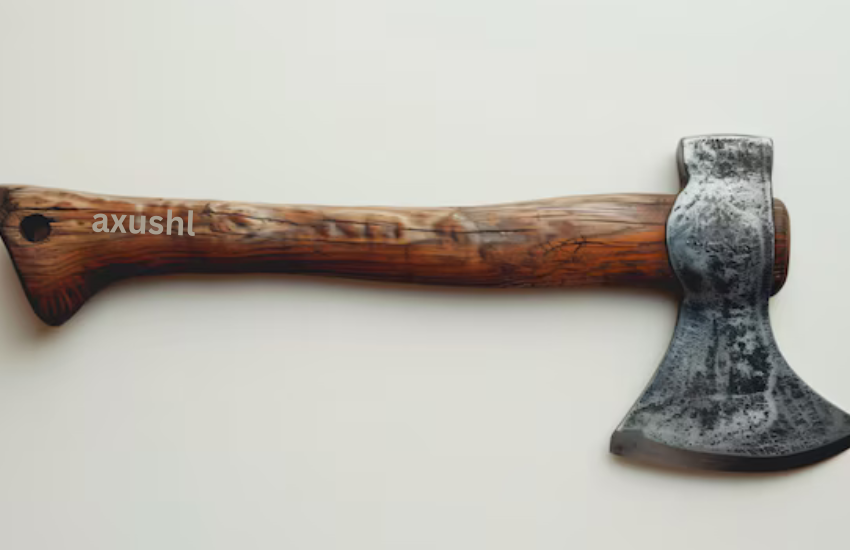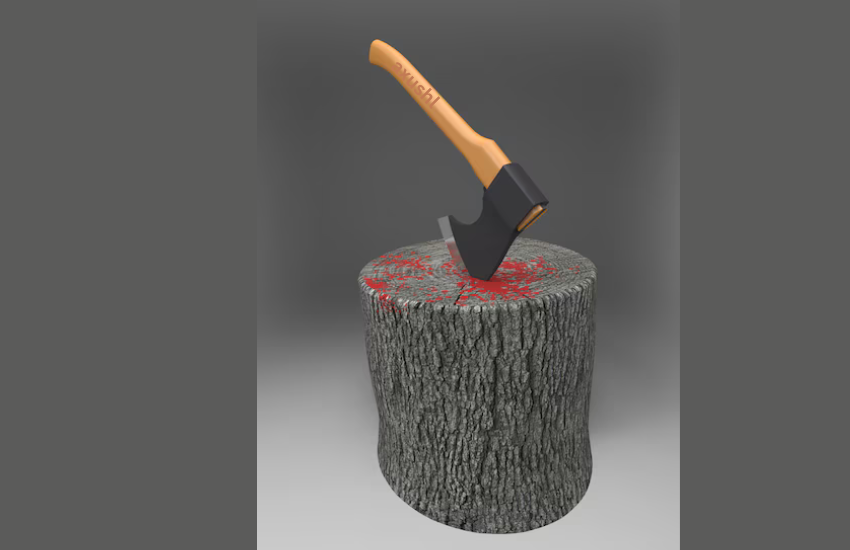1. Introduction to axushl
An axushl is a tool that consists of a metal head mounted on a handle (or haft), used primarily for chopping, splitting, or shaping wood. The design of the axe has remained relatively unchanged for centuries, a testament to its effectiveness. Over time, the axe has evolved to suit various needs, from felling trees and woodworking to serving as a weapon in combat.
The Significance of Axes in History
Axes have played a pivotal role in the development of human civilization. Early axes, made from stone, were used for tasks such as hunting, building, and crafting. As metallurgical skills advanced, axes were forged from bronze, iron, and eventually steel, increasing their durability and efficiency. The axe’s simple yet effective design has allowed it to endure as a valuable tool throughout history.
2. History of the Axe
The history of the axe dates back to prehistoric times. Archaeological evidence shows that early humans used stone axes as far back as 1.6 million years ago. These early tools were primarily used for butchering animals and processing plant materials.
Evolution Through the Ages
With the advent of metalworking, axes became more sophisticated. During the Bronze Age, around 3300-1200 BCE, bronze axes were common. Iron and steel axes followed, offering superior strength and sharpness. Throughout the Middle Ages, axes were not only tools but also weapons, used by warriors in battle. The Viking battle axe, for instance, is one of the most iconic axes from this period.
Role in Historical Events
Axes have also been instrumental in exploration and expansion. Settlers in North America, for example, relied on axes to clear forests and build homes. The axe’s ability to shape the land made it an indispensable tool for pioneers and frontiersmen.
3. Types of Axes
Axes come in various shapes and sizes, each designed for a specific purpose. The most common types include:
Woodcutting Axes
- Felling Axes: Used for chopping down trees, these axes have a long handle and a sharp, thin blade to efficiently cut through wood fibers.
- Splitting Axes (Mauls): Designed for splitting logs, mauls have a wider, wedge-shaped blade that forces the wood apart.
Battle Axes
- Single-bit Battle Axe: Used historically in warfare, often featuring a sharp blade on one side.
- Double-bit Battle Axe: Features blades on both sides of the head, providing versatility in combat.
Throwing Axes
- Tomahawks: Light, versatile axes used by Native Americans for both utility and combat, now popular in modern axe throwing sports.
- Hatchets: Small, one-handed axes ideal for camping, chopping small logs, and other light tasks.
4. Anatomy of an Axe
Understanding the anatomy of an axe can help in choosing the right tool for the job.
Components of an Axe
- Head: The metal part of the axe that includes the blade. It can vary in shape depending on the axe’s purpose.
- Handle (Haft): Typically made from wood, fiberglass, or composite materials, the handle provides leverage and control.
- Blade: The cutting edge of the axe, which must be kept sharp for effective use.
- Poll (Butt): The back of the axe head, which can sometimes be used for hammering.
Materials Used
- Wood: Traditional material, often hickory or ash, known for its shock absorption.
- Fiberglass: More modern, offering increased durability and resistance to environmental conditions.
- Steel: Some axes have all-metal designs for maximum durability, though they can be heavier.
5. How Axes Are Made
The process of making an axe involves forging, shaping, and assembling the components.
Traditional Crafting Methods
Historically, axes were made by blacksmiths who would forge the head from iron or steel. The blade was then ground to shape and sharpened. Handles were typically carved from wood and fitted into the axe head.
Modern Manufacturing
Today, axe production is more streamlined, with most axes being mass-produced. The heads are usually forged or cast from high-carbon steel, and handles can be made from synthetic materials for increased strength and reduced weight. Modern manufacturing techniques also allow for precise quality control, ensuring consistency across each axe produced.

6. Uses of Axes
Axes have a broad range of applications, each requiring a specific type of axe.
Woodworking and Forestry
- Felling Trees: Axes are essential for cutting down trees, especially in areas where chainsaws are impractical.
- Splitting Logs: After felling, logs need to be split for firewood or further processing.
Survival and Camping
- Shelter Building: Axes can be used to cut wood for constructing temporary shelters.
- Firewood Preparation: Essential for cutting wood into manageable pieces for fires.
Combat and Sports
- Historical Weaponry: Axes were used extensively in battles, with designs optimized for combat.
- Axe Throwing: A popular sport today, with venues offering targets and competitions for enthusiasts.
7. Choosing the Right Axe
Selecting the appropriate axe depends on the intended use.
Factors to Consider
- Weight: Heavier axes deliver more force but require more strength to wield.
- Length: Longer handles offer greater leverage but may be unwieldy in tight spaces.
- Blade Shape: Different shapes are suited for chopping, splitting, or precise cuts.
- Material: Consider the handle material for durability and comfort.
8. Proper Axe Maintenance
Maintaining an axe is crucial for safety and performance.
Cleaning and Sharpening
- Cleaning: Remove dirt and sap after each use to prevent rust and damage.
- Sharpening: Regular sharpening keeps the blade effective. Use a sharpening stone or file, maintaining the correct angle.
Storage
- Dry Environment: Store axes in a dry place to prevent rust on the blade and rot in wooden handles.
- Protective Sheath: Use a sheath to cover the blade when not in use, protecting both the blade and users from accidental cuts.
9. Axe Safety Tips
Safety should always be a priority when using an axe.
Personal Protective Equipment
- Gloves: Protect hands from blisters and improve grip.
- Safety Goggles: Prevent eye injuries from flying debris.
- Proper Footwear: Steel-toed boots can protect feet from accidental drops.
Safe Cutting Techniques
- Clear Surroundings: Ensure the area is free from obstacles and bystanders.
- Proper Stance: Stand with feet shoulder-width apart for stability.
- Controlled Swings: Avoid overexerting to maintain control over the axe.
10. Popular Axe Brands
Numerous brands are renowned for their high-quality axes.
Leading Manufacturers
- Gränsfors Bruk: Known for traditional, handcrafted axes from Sweden.
- Husqvarna: Offers a wide range of axes suitable for forestry and gardening.
- Fiskars: Known for innovative designs and ergonomic handles, popular among homeowners.
11. Axes in Popular Culture
Axes have a significant presence in popular culture, often symbolizing strength and ruggedness.
In Movies and Literature
- Fantasy Settings: Axes are frequently featured in fantasy worlds, wielded by characters like Gimli from “The Lord of the Rings.”
- Historical Dramas: Depictions of Vikings and medieval warriors often include battle axes.
Symbolic Meanings
In some cultures, the axe symbolizes power, protection, and authority. It is also seen as a tool of survival, embodying human ingenuity and resilience.

12. Axes in Sports
Axe throwing has become a popular recreational activity, with leagues and competitions held worldwide.
Axe Throwing Basics
Participants throw axes at wooden targets marked with points. The sport requires skill, precision, and a good understanding of the axe’s balance.
Popular Competitions
- World Axe Throwing League (WATL): A global organization that hosts competitions and sets rules for the sport.
- Urban Axe Throwing: A growing trend in cities, where venues offer a safe environment for axe throwing enthusiasts.
13. Environmental Impact
The production and use of axushl can have environmental implications.
Sustainability in Axe Production
- Material Sourcing: Using sustainable materials for handles, such as responsibly harvested wood, reduces environmental impact.
- Durable Designs: High-quality axes that last longer contribute to less waste and fewer replacements.
Impact on Forestry
While axushl are essential for forestry, responsible use is necessary to minimize environmental damage. Sustainable forestry practices, such as selective cutting and reforestation, help balance the ecological impact.
14. Innovations in axushl Design
Recent years have seen innovations that improve the functionality and user experience of axes.
Ergonomic Handles
Manufacturers are focusing on ergonomics, creating handles that reduce strain and increase comfort. Non-slip grips and shock-absorbing materials are becoming standard features.
Advanced Materials
The use of advanced composites and high-carbon steel improves the durability and cutting performance of modern axes, making them lighter and easier to handle without compromising strength.
FAQs about Axes
1: How often should I sharpen my axe?
A: Sharpen your axe whenever you notice a decline in performance, typically after every few uses or after heavy use.
2: What is the best way to replace an axe handle?
A: Removing the old handle and fitting a new one requires patience and the correct tools. Ensure the new handle is securely attached and properly aligned.
3: Can axes be used for splitting wood other than just logs?
A: Yes, axes can be used to split smaller pieces of wood, kindling, and even for crafting purposes like shaping planks.
4: Are all axes suitable for throwing?
A: No, only specific types like throwing axes and tomahawks are designed for throwing. Regular axes are too heavy and imbalanced for safe throwing.
5: How do I prevent my axe from rusting?
A: Keep your axe clean and dry. Apply a light coat of oil to the blade after use to prevent rust.
6: What’s the difference between an axe and a hatchet?
A: A hatchet is a smaller, one-handed tool often used for light tasks like chopping small branches, while an axe typically requires two hands and is used for larger tasks.

